
Consumer Insights
Uncover trends and behaviors shaping consumer choices today
Procurement Insights
Optimize your sourcing strategy with key market data
Industry Stats
Stay ahead with the latest trends and market analysis.
The Expert Market Research report, titled “Desert Sand Bricks Manufacturing Plant Project Report 2026 Edition: Industry Trends, Capital Investment, Price Trends, Manufacturing Process, Raw Materials Requirement, Plant Setup, Operating Cost, and Revenue Statistics” includes various aspects that are critical for establishing a desert sand bricks plant. These include infrastructure requirements, transportation requirements, utility specifications, and financial and economic analysis, among others.
The demand for desert sand bricks is increasing due to scarcity of traditional sand resources. Natural sand, especially river sand, is becoming increasingly scarce due to over-exploitation and environmental regulations. The construction industry heavily relies on natural sand as a primary ingredient in concrete and mortar. As traditional sources diminish, desert sand presents an alternative that is abundant yet underused. As per industry reports of 2024, the global demand for sand in construction is projected to exceed 50 billion tons annually, highlighting the urgent need for alternative sources like desert sand. The use of desert sand bricks also aligns with global efforts toward sustainable construction practices. Using desert sand can help mitigate the environmental impact associated with mining traditional sand sources, which often leads to habitat destruction and ecological imbalance. In 2024, it was reported that bricks made from treated desert sand can reduce carbon emissions by up to 30% compared to conventional bricks, supporting eco-friendly building initiatives.
Recent advancements in processing techniques have also made it feasible to use desert sand effectively in brick production. Engineers and researchers have developed methods to enhance the properties of desert sand through treatments that improve its suitability for construction purposes. A study published in July 2024 demonstrated that innovative binding agents could increase the compressive strength of desert sand bricks by up to 25%, making them a viable alternative to traditional materials. Other experimental results indicate that bacteria-treated desert sand-cement bricks show a 19% increase in compressive strength compared to control samples.
Other elements to consider while establishing a desert sand bricks plant include raw material sourcing, workforce planning, and packaging. The production of desert sand bricks relies on several key raw materials, primarily desert sand sourced from arid regions such as the Sahara and Arabian deserts. This sand is known for its fine, granular texture, making it ideal for brick manufacturing due to its binding properties. Alongside desert sand, cement serves as a crucial binding agent, typically produced from limestone and clay mined from quarries. Water is also essential for the hydration of cement. Various chemical additives are also used to enhance the bricks' workability and durability.
Moreover, to help stakeholders determine the economics of a desert sand bricks plant, project funding, capital investments, and operating expenses are analyzed. Projections for income and expenditure, along with a detailed breakdown of fixed and variable costs, direct and indirect expenses, and profit and loss analysis, enable stakeholders to comprehend the financial health and sustainability of a business. These projections serve as a strategic tool for evaluating future profitability, assessing cash flow needs, and identifying potential financial risks.
Desert sand bricks are building material made primarily from abundant desert sand and are often combined with waste materials like fly ash or cement to enhance their properties. These bricks typically have a compressive strength ranging from 5 to 15 MPa. They exhibit good thermal insulation, making them suitable for construction in arid regions. Additionally, desert sand bricks are lightweight, which simplifies transportation and handling. Their durability allows them to withstand extreme weather conditions, offering a sustainable solution to housing shortages in urban areas.
Desert sand bricks have a density ranging from 1,200 to 1,800 kg/m³ and a compressive strength between 5 to 15 MPa, depending on the binder used. These bricks demonstrate low thermal conductivity values of approximately 0.2 to 0.5 W/m·K, providing effective insulation in arid climates. They also have a water absorption rate of about 10% to 14% after soaking, which influences their overall strength and longevity. Desert sand bricks often incorporate binders like metakaolin or cement, with metakaolin content ranging from 5% to 20% by weight, enhancing their durability and resistance to erosion. The pH of these bricks typically falls between 7 and 9, indicating neutral to slightly alkaline properties, which sometimes affect their interaction with other materials in construction.
The production of desert sand bricks begins with the selection of raw materials, including desert sand, metakaolin, and crushed stone. The first step is batching the ingredients, where metakaolin comprises 5% to 20% of the mixture. Next, the dry ingredients are combined in a mixer for dry mixing. Water is then added to the mixture to initiate wet mixing, which involves blending at low speed for 30 seconds followed by high speed for 1 minute to achieve uniformity. The wet mixture is poured into moulds, and a hydraulic press is used to apply compression.
Once formed, the bricks are carefully removed from the moulds and undergo a drying and curing process. They are left to dry in a shaded area to prevent cracking, followed by curing with water for approximately 7 days. After curing, the bricks undergo rigorous quality control measures to ensure the finished desert sand bricks meet industry standards.

Read more about this report - REQUEST FREE SAMPLE COPY IN PDF
Desert sand bricks are increasingly being used in eco-friendly housing projects, particularly in arid regions where traditional materials are scarce. In 2024, the number of green housing projects is on the rise. For example, the SHERIS project in Sweden will construct seven housing complexes with around 750 energy-efficient social housing units, supported by an EU grant of USD 11 million. In 2024, government initiatives in India are promoting green housing through financial incentives and subsidies aimed at making eco-friendly homes more accessible. According to industry reports, over 1,800 green housing projects are anticipated to be launched across various states.
Additionally, the Union Budget 2024 aims to introduce measures such as tax deductions for homeowners investing in green homes and grants for builders using sustainable materials. Projects like the Royal Orange County in Pune exemplify this trend, featuring sustainable designs with solar rooftops and rainwater harvesting systems, targeting a 5-star GRIHA rating. Additionally, the Clichy-Batignolles Eco-District in Paris showcases innovative urban redevelopment with energy-efficient buildings and green roofs. Additionally, innovations in brick production techniques, such as using metakaolin as a binder, have improved the density of desert sand bricks by up to 45% compared to traditional fly ash bricks, further driving their adoption in modern construction practices.
A detailed overview of production cost analysis that evaluates the manufacturing process of desert sand bricks is crucial for stakeholders considering entry into this sector. Furthermore, stakeholders can make informed decisions based on the latest economic data, technological innovations, production process, requirements of raw materials, utility and operating costs, capital investments by major players, pricing strategies, and profit margins. For instance, in northern China alone, desertification has expanded over 350,000 km2 in the past 50 years due to human activity and climate change. This increased supply of desert resources presents a significant opportunity for manufacturers of desert sand bricks.
Below are the sections that further detail the comprehensive scope of the prefeasibility report for a desert sand bricks production plant:
Market Dynamics and Trends: Urbanisation, infrastructure development, and government initiatives are profoundly influencing market conditions in the desert sand bricks sector. The United Nations projects that by 2050, approximately 68% of the global population will reside in urban areas, which necessitates extensive construction efforts. In 2024 alone, it was estimated that countries in the Asia-Pacific region invested over USD 1 trillion in infrastructure projects, which increased the demand for durable materials such as desert sand bricks. Specifically, India plans to invest INR 10 lakh crore (approximately USD 120 billion) in infrastructure under its National Infrastructure Pipeline. Meanwhile, China is expected to invest over USD 1 trillion in infrastructure as part of its 14th Five-Year Plan, with a focus on green initiatives. Additionally, China has set a target to reduce carbon emissions by 30% by 2030, with substantial investments in renewable energy and eco-friendly construction materials. Governments are also actively promoting the use of sustainable materials in construction through initiatives like "Housing for All" initiative in India. Collectively, these trends help businesses align their production plans in the desert sand bricks market.
Profiling of Key Industry Players: The desert sand bricks report highlights several key manufacturers. Kruner Industries stands out with its innovative KrunerBinder, a patented cement-free binder that effectively binds all grades of sand, including desert sand. This technology not only enables the production of construction-grade materials but also significantly reduces CO2 emissions by up to 90% compared to traditional cement production. Another notable player is Imperial College London, which has developed a biodegradable construction material called Finite, made from desert sand. Additionally, Interstate Brick Company is engaged in producing various shades of bricks, including those made from desert sand.
Economic Analysis: Capital expenditure (CAPEX) analysis provides stakeholders the knowledge about required investments in advanced technologies, efficient machinery, and necessary infrastructure. Investing in high-capacity mixing equipment, such as a continuous mixer or high-shear mixer, can improve production efficiency by 20-30%. Investing in energy-efficient systems, such as combined heat and power (CHP) systems could reduce energy consumption by up to 30%, as these systems use waste heat from production processes to generate electricity and provide heating.
The availability of desert sand and the demand for bricks in construction projects significantly impact desert sand brick pricing. When demand exceeds supply, prices tend to rise, while an oversupply can lead to price reductions. The cost of transporting desert sand from extraction sites to manufacturing facilities can also affect brick prices. Higher transportation costs due to distance or logistical challenges can lead to increased overall costs for the final product.
The specific characteristics of the desert sand, such as its particle size and the presence of impurities, can influence its suitability for brick production. Broader economic conditions, including inflation and fluctuations in the construction industry, can also play a role in price changes. As construction costs rise due to increased material prices or labour shortages, the cost of bricks made from desert sand may follow suit. As of January 2025, prices for sand in Pakistan are approximately RS. 44 per cubic foot, RS. 10,000 for 200 cubic feet, and RS. 44,000 for 1,000 cubic feet. In the United States, price of landscape sand starts at around USD 29.50 per ton and price for special sands range from USD 52 to USD 86.50 per cubic yard.
Establishing a desert sand bricks manufacturing facility requires a comprehensive financial investment that encompasses various elements critical to the project's success. The following sections detail these components:
Projected profit margins and effective product pricing strategies improve overall profitability. Manufacturers might target a profit margin of around 20-30%, achieved through strategic pricing based on raw material costs and prevailing market demand. Effective pricing strategies should consider fluctuations in raw material prices and competitive positioning within the market.
The establishment of a desert sand bricks manufacturing facility must comply with various regulatory frameworks that govern production standards. In India, the Ministry of Environment, Forest, and Climate Change (MoEFCC) sets forth mandates such as the requirement for new brick kilns to adopt technologies like zig-zag technology or vertical shaft kilns to reduce emissions. This regulation focuses on compliance with emission limits and proper chimney heights to mitigate environmental impact.
Additionally, the Bureau of Indian Standards (BIS) provides guidelines for brick manufacturing through standards such as IS 2117, which outlines minimum requirements for operations including the selection of raw materials and manufacturing processes. This standard ensures that facilities adhere to quality and safety measures during production.
Other relevant regulations include the Environment (Protection) Act, 1986, which establishes comprehensive guidelines for environmental management in industrial operations, and the Air (Prevention and Control of Pollution) Act, 1981, which mandates emission control measures for industries, including brick kilns. Furthermore, local regulations concerning land use and water resource management must also be considered to ensure sustainable operations. Compliance with these regulatory frameworks is crucial for the successful establishment and operation of a desert sand bricks manufacturing facility.
This prefeasibility report aims to equip potential investors and existing manufacturers with crucial insights to make informed decisions in the desert sand bricks industry.




*While we strive to always give you current and accurate information, the numbers depicted on the website are indicative and may differ from the actual numbers in the main report. At Expert Market Research, we aim to bring you the latest insights and trends in the market. Using our analyses and forecasts, stakeholders can understand the market dynamics, navigate challenges, and capitalize on opportunities to make data-driven strategic decisions.*
Get in touch with us for a customized solution tailored to your unique requirements and save upto 35%!
Basic Plan
USD 5,699
USD 4,844
Get Startedtax inclusive*
Raw Material and Product Specification, Raw material consumption, Process flow diagram
Machinery Cost, Working Capital
Utilities consumption, Operating cost, Overheads, Financing Charges, GSA , Packaging
Premium Plan
USD 6,799
USD 5,779
Get Startedtax inclusive*
Key Processing Information, Capital Investment Analysis, Conversion Cost Analysis
Raw material consumption and prices, Utilities consumption breakdown, By-Product Credit, Labour Charges Breakdown
Land and Site Cost, Equipment Cost, Auxiliary Equipment Cost, Contingency, Engineering and Consulting Charges
Enterprise Plan
USD 8,899
USD 7,564
Get Startedtax inclusive*
Key Processing Information, Capital Investment Analysis, Conversion Cost Analysis, Variable Cost Breakdown, Investing Cost Breakdown,
Breakdown of machinery cost by equipment, Auxiliary Equipment Cost, Piping, Electrical, Instrumentation
Cost of Construction, Plant Building, Site Development Charges
Land Cost, Development Charges
Dynamic Spreadsheet (Unlocked)
*Please note that the prices mentioned below are starting prices for each bundle type. Kindly contact our team for further details.*

Basic Plan
USD 5,699
USD 4,844
Key Processing Information
Raw Material and Product Specification, Raw Material Consumption, Process Flow Diagram
Capital Investment Analysis
Machinery Cost, Working Capital
Conversion Cost Analysis
Utilities Consumption, Operating Cost, Overheads, Financing Charges, GSA , Packaging

Premium Plan
USD 6,799
USD 5,779
All Contents of Basic Report
Key Processing Information, Capital Investment Analysis, Conversion Cost Analysis
Variable Cost Breakdown
Raw Material Consumption and Prices, Utilities Consumption, Breakdown By-Product Credit, Labour Charges Breakdown
Investing Cost Breakdown
Land and Site Cost, Equipment Cost, Auxiliary Equipment Cost, Contingency, Engineering and Consulting Charges

Enterprise Plan
USD 8,899
USD 7,564
Includes all Report Content
Key Processing Information, Capital Investment Analysis, Conversion Cost Analysis, Variable Cost Breakdown, Investing Cost Breakdown,
Equipment Cost Breakdown
Breakdown of Machinery Cost By Equipment, Auxiliary Equipment Cost, Piping, Electrical, Instrumentation
Land and Construction Cost Details
Land Cost, Development Charges, Cost of Construction, Plant Building, Site Development Charges
Dynamic Excel Cost Model
Dynamic Spreadsheet (Unlocked)
*Please note that the prices mentioned below are starting prices for each bundle type. Kindly contact our team for further details.*
Flash Bundle
Number of Reports: 3
20%
tax inclusive*
Small Business Bundle
Number of Reports: 5
25%
tax inclusive*
Growth Bundle
Number of Reports: 8
30%
tax inclusive*
Enterprise Bundle
Number of Reports: 10
35%
tax inclusive*
How To Order

Select License Type
Choose the right license for your needs and access rights.

Click on ‘Buy Now’
Add the report to your cart with one click and proceed to register.

Select Mode of Payment
Choose a payment option for a secure checkout. You will be redirected accordingly.
Gain insights to stay ahead and seize opportunities.
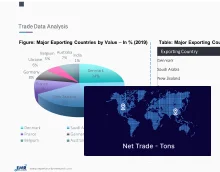
Get insights & trends for a competitive edge.
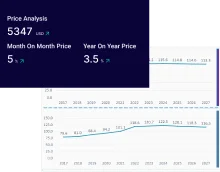
Track prices with detailed trend reports.

Analyse trade data for supply chain insights.
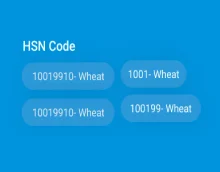
Leverage cost reports for smart savings
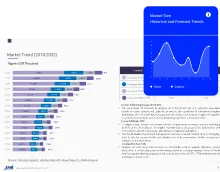
Enhance supply chain with partnerships.
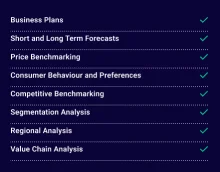
Connect For More Information
Our expert team of analysts will offer full support and resolve any queries regarding the report, before and after the purchase.
Our expert team of analysts will offer full support and resolve any queries regarding the report, before and after the purchase.
We employ meticulous research methods, blending advanced analytics and expert insights to deliver accurate, actionable industry intelligence, staying ahead of competitors.
Our skilled analysts offer unparalleled competitive advantage with detailed insights on current and emerging markets, ensuring your strategic edge.
We offer an in-depth yet simplified presentation of industry insights and analysis to meet your specific requirements effectively.
Share